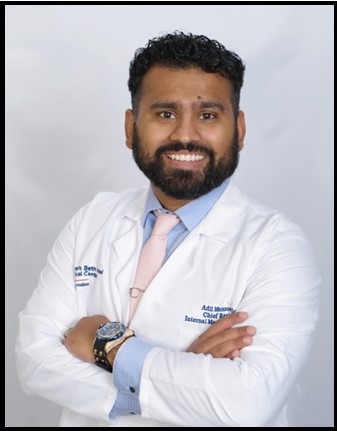THE DOCTOR IS IN / By Dr. Adil Manzoor OP-ED
The dependence on technology is increasing by the day, and that’s telling you something, considering how dependent we are already on technology. Let’s get straight to the point – mammograms.
A mammogram is an X-ray examination of the breast, usually used to detect cancer and other breast problems. Now, to take a mammogram itself, you need an X-Ray machine – you need technology for that. But artificial intelligence is taking it a little further, or at least, that’s the aim.
You are probably familiar with Artificial Intelligence (AI) already – I mean, your smartphone relies heavily on artificial intelligence. Over the last few years, AI has permeated every industry, including the medical industry.
Many people have argued against AI, whose primary argument is that human life is too delicate to leave to a computer. To be honest with you, that’s not a bad argument at all. There are instances of mid-surgery where doctors have to make incredibly fast decisions on the spot; AI may not be too reliable in such situations.
However, that doesn’t apply to mammograms. Right now, radiologists make mistakes when reading mammograms with false positives (where the scan is incorrectly judged abnormal) and false negatives (where the scan is incorrectly judged as normal). AI can help radiologists make more accurate decisions when reading mammograms.
According to a Google-funded study on scans from the United States, the AI system produced a 9.4 percent reduction in false negatives and a lowering of 5.7 percent in false positives. This is also consistent with the results in Britain, where the system beat the radiologists, reducing false negatives by 2.7 percent and false positives by 1.2 percent.
This supports one of the chief arguments of AI use in mammograms: increased confidence in diagnosis and more accurate results. There are even times when radiologists are correct in their diagnosis but have to recheck several times before confidently breaking the news to the patient. AI gives that much-valued second opinion.
Then, there’s the fact that radiologists are humans, and humans get tired. Physicians’ burnout is a really serious issue. During the peak COVID times, I remember I had to push myself past limits, I didn’t even know I had to cope with the patient overload. Of course, this was needed then, but it’s not close to being ideal.
According to research, the performance of radiologists tends to decrease after 70 to 80 minutes of reading. After a few hours, these radiologists don’t function at 100%, which is far from proper in the medical industry. AI, on the other hand, never gets tired. Computers can work for days, weeks, and even years without needing a break. With AI, radiologists can make more informed and reliable decisions during their shifts.
Furthermore, another perk is the ability to detect problems quite early. Humans are smart, but let’s not deceive ourselves, we aren’t in the same stratosphere as these computers. They process much larger information in far less time. They can detect the tiniest of issues in these readings. On some occasions, radiologists discover that there were problems in previous readings, but they were too hard to detect back then. Those small details don’t get overlooked with AI, and early diagnosis of problems can be made.
While I don’t know exactly where technology is going, I can assure you AI is going to be a major player, especially when reading test results, and I support its utilization along with medical professionals. By itself, I believe the harm it can cause is too great for us to ignore.
This article was written by Dr. Adil Manzoor DO, a Board Certified Internist & Board Eligible Pediatrician, who works as a Hospitalist, and Emergency Room Physician. He is also the current President of Garden State Street Medicine, a non-profit organization whose sole purpose is to provide free preventive and acute urgent care services for the homeless. He is also the co-founder of his own unique medical practice Mobile Medicine NJ & COV Clinic NJ d/b/a SafelyOpen Health, and has worked with several organizations, including schools, to help get our communities tested all throughout the COVID pandemic and continues to do so.
References
- https://www.nytimes.com/2020/01/01/health/breast-cancer-mammogram-artificial-intelligence.html
- https://www.mammoscreen.com/benefits-of-ai-in-mammography
- https://www.spiedigitallibrary.org/conference-proceedings-of-spie/3036/0000/Time-of-day-effects-on-mammographic-film-reading-performance/10.1117/12.271295.full?SSO=1


